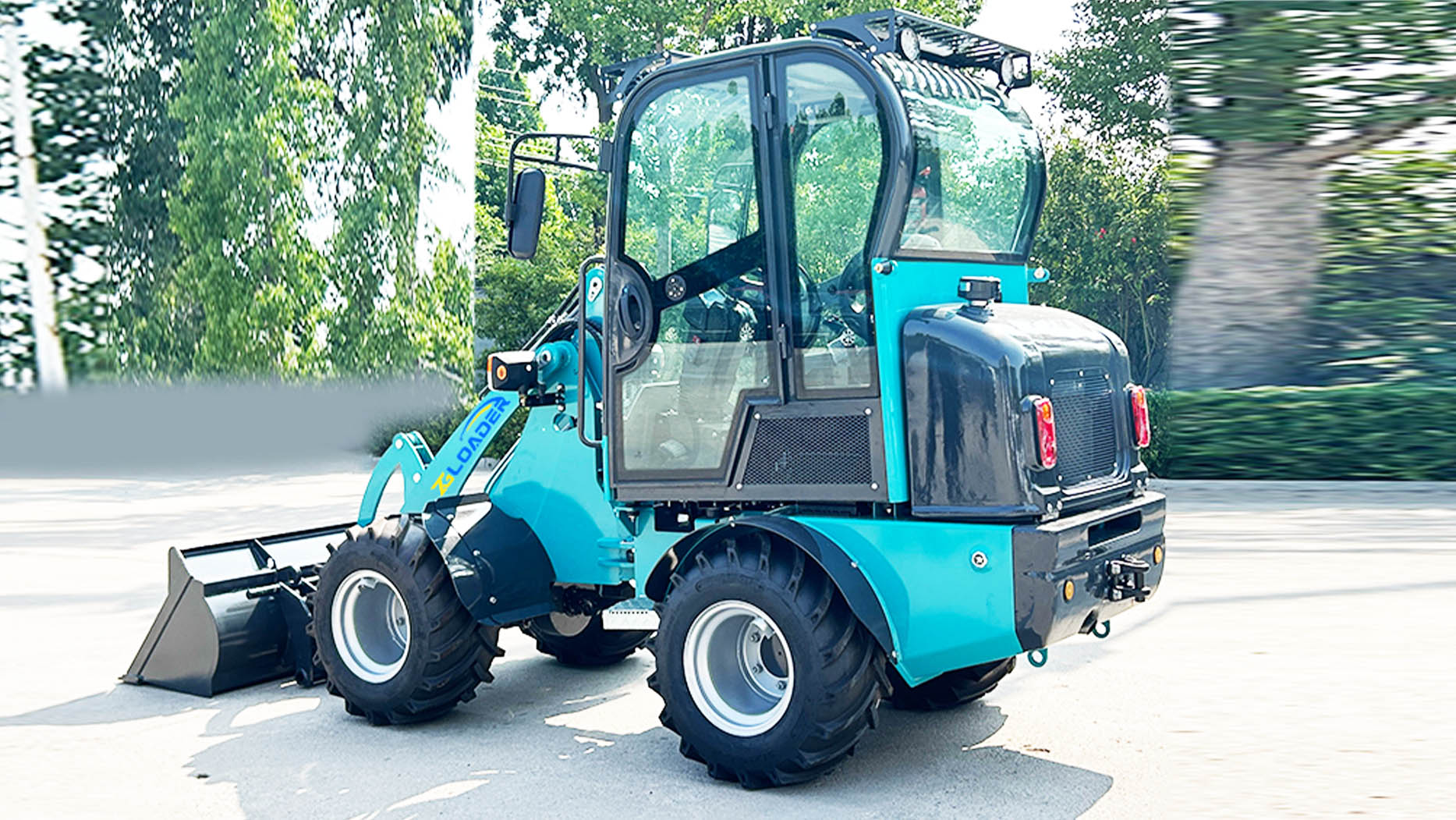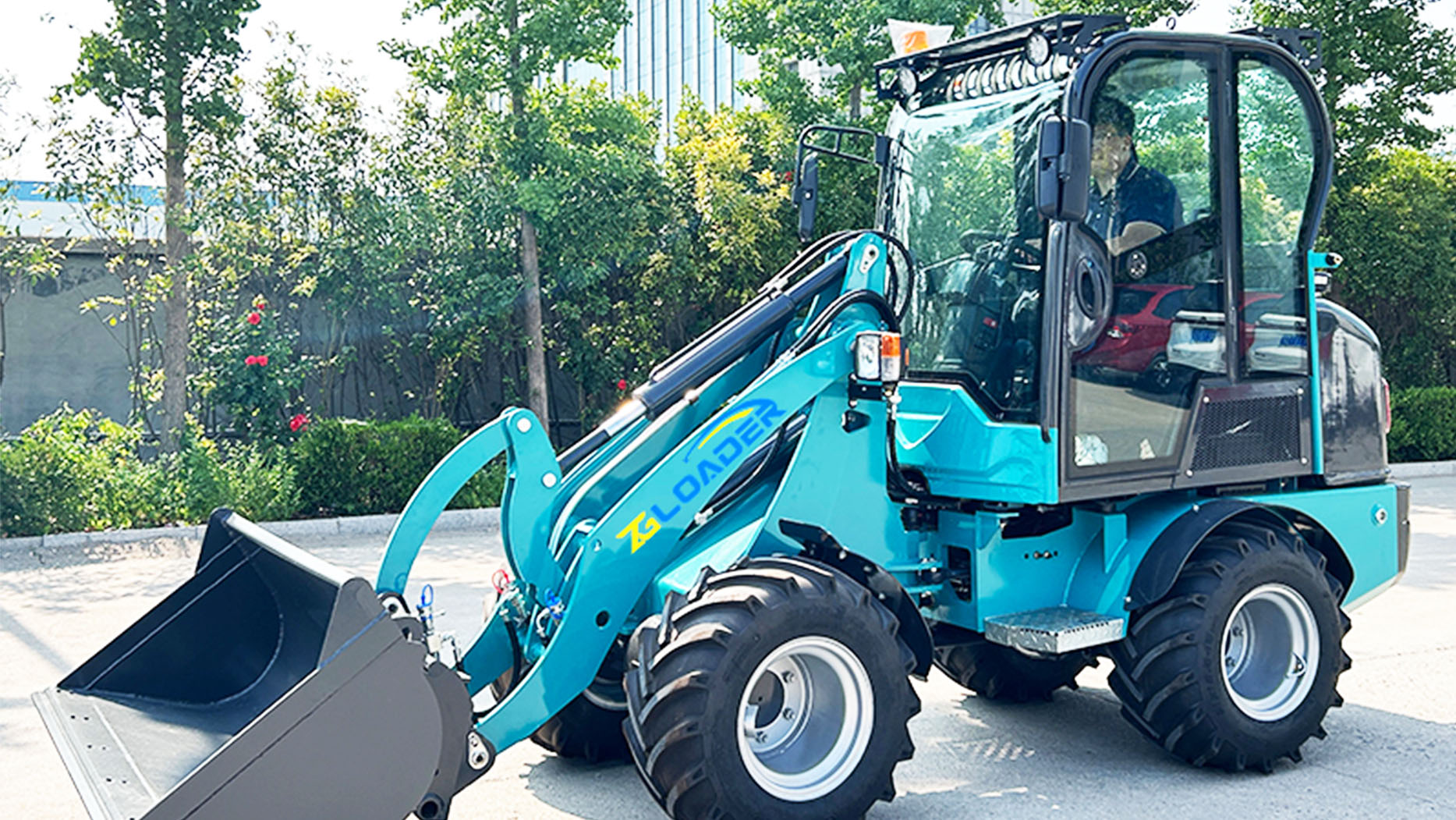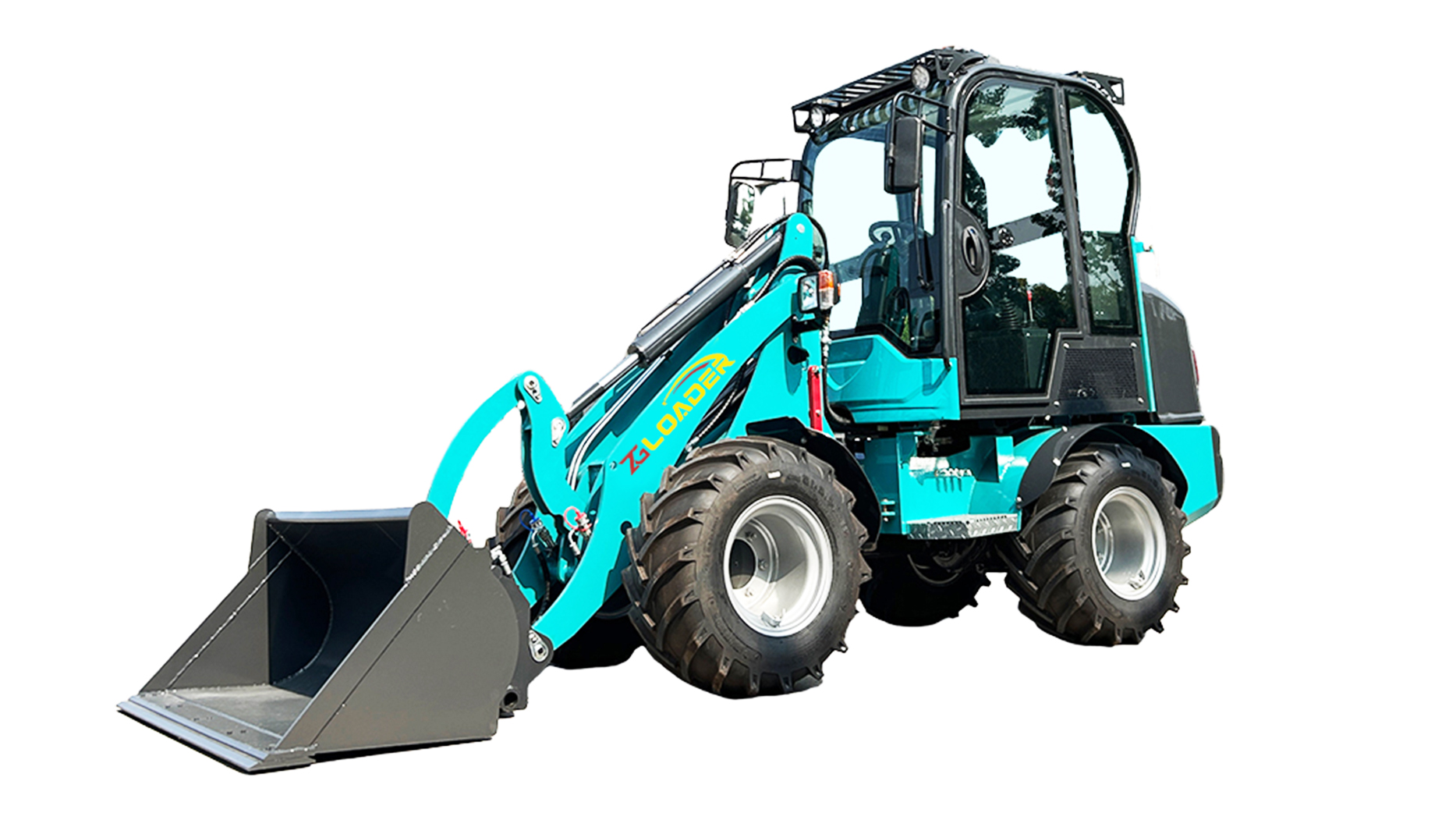For anyone in construction, landscaping, agriculture, or material handling, the choice between a wheel loader and a skid steer loader is a frequent and crucial decision. Both machines are indispensable for moving bulk materials, but they're designed for distinctly different applications and environments. Selecting the right one for your specific needs isn't just about preference; it's about optimizing efficiency, maximizing productivity, and ensuring cost-effectiveness for your projects.
While a wheel loader is often seen as the heavy-hitter for large-scale loading, a skid steer loader shines in its compact versatility. Understanding their core differences, strengths, and limitations is paramount to making an informed investment. Let's break down how to choose between these two workhorses.
Understanding the Fundamentals: What Are They Designed For?
Before diving into comparisons, it's essential to grasp the basic design philosophy behind each machine.
1. Wheel Loader:
A wheel loader is typically a larger, articulated machine (meaning the frame bends in the middle for steering, except for some smaller, rigid-frame models). It features a large, front-mounted bucket designed for scooping, lifting, and loading significant volumes of loose material into trucks, hoppers, or stockpiles.
Primary Purpose: High-volume loading and moving of bulk materials over medium to long distances. It excels where massive capacity and continuous operation are required.
Key Characteristics: Generally larger, faster travel speeds on relatively flat terrain, greater lift capacity, and better visibility for loading high-sided trucks.
2. Skid Steer Loader:
A skid steer loader is a compact, rigid-frame machine that steers by "skidding" its wheels (or tracks, in the case of Compact Track Loaders) across the ground. It uses two separate sets of drive motors for each side, allowing one side to move forward while the other moves backward, causing the machine to pivot or "skid." It's incredibly agile and boasts immense versatility with a vast array of skid steer attachments.
Primary Purpose: Versatile material handling, digging, grading, and specialty tasks in confined spaces or where agility and attachment adaptability are crucial.
Key Characteristics: Compact size, extreme maneuverability (zero-radius turns), vast attachment options, and excellent pushing power for its size.

Key Differentiating Factors to Consider
When making your choice, evaluate these critical aspects of your operation:
1. Size and Maneuverability
This is often the most immediate and defining difference.
Wheel Loader:
Size: Ranges from mini wheel loader models (compact and agile) to very large production loaders. Even a mini wheel loader is generally larger than most skid steers.
Maneuverability: Articulated steering allows for good turning, but they require more space than a skid steer. Best suited for open areas with room to move and turn.
Application Fit: Large construction sites, quarries, landfills, expansive agricultural fields.
Skid Steer Loader:
Size: Inherently compact. Even large skid steers are relatively small compared to medium wheel loaders. They also have a mini skid steer category that is exceptionally small.
Maneuverability: Unmatched agility due to skid-steer steering. Can perform zero-radius turns, making them ideal for confined spaces, narrow corridors, and intricate job sites.
Application Fit: Residential construction, landscaping, demolition inside buildings, barns, tight urban job sites, loading small trailers.
2. Lift Capacity and Reach
How much weight you need to lift and to what height are crucial performance metrics.
Wheel Loader:
Lift Capacity: Generally has a much higher lift capacity, ranging from a few tons for mini wheel loader models to over 50 tons for large mining loaders.
Reach & Lift Height: Excellent reach and dump height, making them highly efficient for loading high-sided dump trucks, large hoppers, or creating tall stockpiles.
Application Fit: Any task involving moving massive quantities of material, continuous loading of large trucks, and high-volume operations.
Skid Steer Loader:
Lift Capacity: Ranges from around 1,000 lbs for a mini skid steer to over 4,000 lbs for large skid steers.
Reach & Lift Height: More limited in reach and lift height compared to wheel loaders. While they can load dump trucks, it may take more cycles or be challenging with very high-sided vehicles.
Application Fit: Loading smaller trucks and trailers, moving materials around a confined site, stacking pallets at moderate heights.
 3. Versatility and Attachments
3. Versatility and Attachments
Both machines boast impressive versatility, but their approach to it differs.
Wheel Loader:
Versatility: Primarily designed for loading and moving. While they can use attachments like forks, brooms, or grapples, their core strength remains in bucket-based material handling. Their attachment options are not as extensive as a skid steer's.
Common Attachments: Various bucket types (general purpose, rock, light material, multi-purpose), pallet forks, grapples, snow pushers.
Skid Steer Loader:
Versatility: The king of versatility. Its compact design and strong auxiliary hydraulics make it compatible with hundreds of skid steer attachments, effectively turning it into a multi-purpose tool carrier.
Common Attachments: Buckets, pallet forks, augers, trenchers, hydraulic hammers, grapples, brush cutters, snow blowers, tillers, cold planers, brooms, dozer blades, and many more.
Application Fit: Ideal for contractors or businesses that need one machine to perform a vast array of specialized tasks without investing in multiple single-purpose machines.
4. Ground Disturbance and Terrain Capability
Consider the surfaces you'll be operating on and the environmental impact.
Wheel Loader:
Ground Disturbance: Generally has less ground disturbance than a wheeled skid steer due to articulated steering and less "skidding." Less turf damage on sensitive areas.
Terrain: Excellent on relatively flat to moderately uneven ground. Large tires provide good traction.
Tracked Wheel Loaders (less common): Some specialized wheel loaders are tracked, offering superior flotation and traction in extremely soft conditions, but these are niche.
Skid Steer Loader:
Ground Disturbance (Wheeled): The "skidding" action can cause significant turf damage and churn up soft ground, especially when turning. Not ideal for finished landscapes.
Ground Disturbance (Tracked - CTLs): Compact Track Loaders (CTLs), which are tracked versions of skid steers, offer vastly superior flotation and reduced ground pressure, making them excellent for soft, muddy, or sensitive terrain (e.g., wet lawns, golf courses). They typically cost more than wheeled skid steers.
Terrain: Wheeled skid steers are best on concrete, asphalt, or relatively firm, compact dirt. CTLs excel in mud, sand, snow, and uneven, soft ground.

5. Operator Skill and Comfort
Consider the learning curve and daily operational experience.
Wheel Loader:
Controls: Typically uses steering wheel and joystick controls, which can feel more familiar to operators with truck or automotive experience.
Visibility: Often offers excellent visibility, especially for elevated loading. Cabs are generally spacious and comfortable.
Operator Fatigue: Smoother ride due to articulation can reduce fatigue over long shifts.
Skid Steer Loader:
Controls: Can use hand levers, foot pedals, or popular electro-hydraulic (EH) joysticks (ISO or H-pattern). The "skid" steering takes some getting used to.
Visibility: Rear visibility can be limited due to the engine compartment. Newer models have improved visibility, but the compact size can mean a tighter cab.
Operator Fatigue: The rigid frame and skid-steer action can lead to a choppier ride, potentially increasing operator fatigue over long periods, especially on rough terrain.
6. Cost Considerations (Purchase, Operating, Maintenance)
Budget is always a significant factor.
Initial Purchase Price:
Wheel Loader: Generally higher initial investment, especially for larger models. A new mini wheel loader might start around $30,000, while larger ones can exceed $100,000.
Skid Steer Loader: More affordable entry point. A new mini skid steer can be found for $20,000, with larger models ranging up to $80,000-$90,000 (wheeled) or more for CTLs.
Operating Costs:
Fuel: Wheel loader diesel engines, especially larger ones, will consume more fuel per hour than most skid steers, simply due to their size and power.
Tires/Tracks: Replacement costs for wheel loader tires can be substantial due to their size. Skid steer tires are less expensive, but CTL tracks are a significant ongoing cost.
Maintenance:
Wheel Loader: Maintenance can be more complex due to larger components and systems. However, well-maintained wheel loader diesel engines are durable.
Skid Steer Loader: Generally simpler to maintain, but aggressive use of attachments or operation on very rough terrain can lead to wear on pins, bushings, and hydraulic components.
Resale Value: Both types generally hold good resale value, particularly from reputable brands.
7. Brand and Dealer Support
The manufacturer and your local dealer play a crucial role in your long-term satisfaction.
Established Brands: Major global players offer a wide range of both wheel loaders and skid steer loaders. They typically have extensive dealer networks, ensuring readily available parts, expert service technicians, and strong warranties.
Value Brands (e.g., ZGLOADER/MYZG): Companies like ZGLOADER/MYZG (often referring to Mingyu Group and similar Chinese manufacturers) have gained significant traction by offering competitively priced machines in both categories.
ZGLOADER/MYZG Wheel Loaders: Often provide robust, reliable wheel loader diesel models that offer excellent value, especially in the compact to medium size range. They are a strong option if budget is a key concern but you still need dependable performance.
ZGLOADER/MYZG Skid Steer Loaders: Similarly, their skid steer loaders can be a more affordable entry point into the market, offering good power and versatility, particularly for those looking for a compact solution without the premium price tag of some Western brands.
Consider them if: You're seeking cost-effective solutions and have evaluated their local dealer support for parts and service, which is critical for any machine, regardless of brand.
Making the Right Choice: Scenarios
Choose a Wheel Loader if:
You consistently move large volumes of loose material (sand, gravel, soil, snow, waste).
Your primary task is loading large dump trucks or high hoppers.
You operate in open areas with plenty of space to maneuver.
You prioritize faster cycle times for bulk material handling.
You need raw power for heavy digging or pushing tasks.
Your budget allows for a higher initial investment and larger operating costs.
Choose a Skid Steer Loader if:
You operate in confined spaces, narrow aisles, or urban job sites.
You need extreme versatility with a wide range of specialized tasks (digging, trenching, hammering, sweeping, grading, augering, clearing brush).
You transport materials over shorter distances.
You need a highly agile machine that can turn on a dime.
Your loads are generally within the skid steer's capacity.
You prefer a lower initial investment and typically lower fuel consumption than a full-size wheel loader diesel.
You might consider a CTL (Compact Track Loader) if you frequently work on soft, muddy, or sensitive ground.
In many operations, both machines might even coexist, each handling tasks where it excels. A wheel loader might handle primary loading, while a skid steer loader handles site cleanup, fine grading, or specialized attachment work.
Ultimately, choosing between a wheel loader and a skid steer loader boils down to a meticulous evaluation of your specific operational needs, budget, and terrain. By carefully weighing the size, capacity, versatility, operating environment, and total cost of ownership for options like a mini wheel loader or a versatile skid steer loader from brands like ZGLOADER/MYZG, you can select the machine that will be the true powerhouse for your business, ensuring efficiency and profitability for years to come.
Post time:Jul.04.2025
